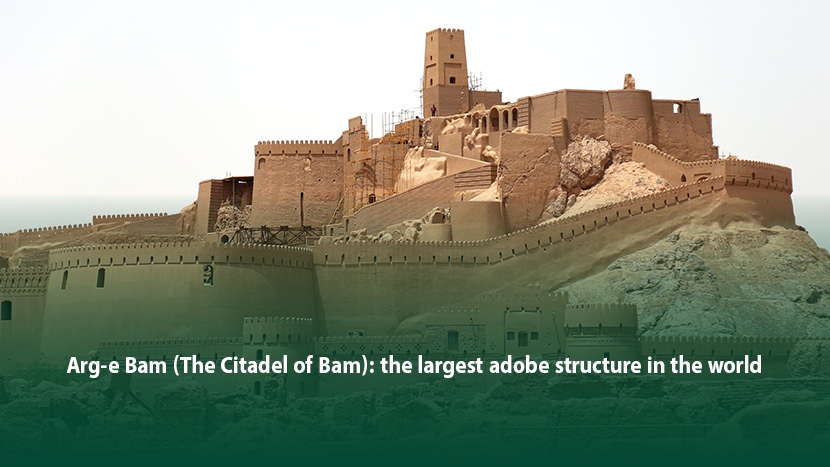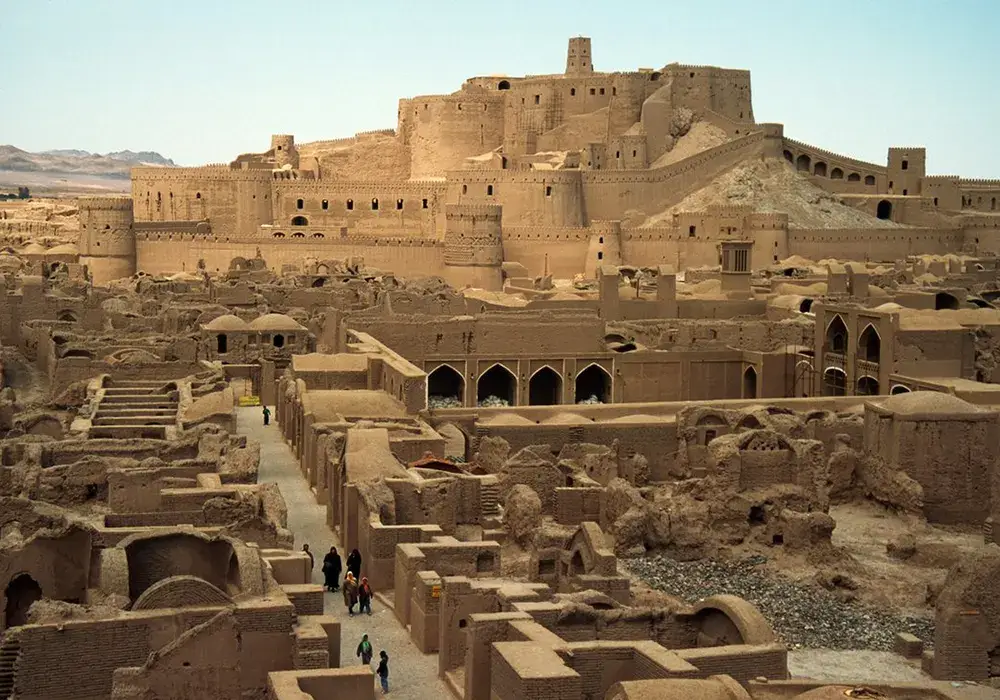
The earliest signs of the formation of Arg-e Bam date back to the Achaemenid era (around 550 BCE). Known as the largest adobe (mud-brick) structure in the world, the Bam Citadel is inscribed on the UNESCO World Heritage List. The historical city of Bam is located in southeastern Iran. The citadel, one of Iran’s registered intangible cultural heritage sites, was an important stronghold along the Silk Road. It was situated at the crossroads of the Silk Road and the routes leading to Central Asia, the Persian Gulf, and Egypt.
Some of the architectural elements used in Arg-e Bam—such as the combination of structural features and the natural hill it stands on—bear strong resemblance to Persepolis. After the Sassanid Empire was defeated by the Arabs, the city was attacked and suffered significant damage. In later centuries, local ruling dynasties in eastern Iran—such as the remnants of the Mongols, and later the Safavids and Qajars—used Arg-e Bam as a strategic stronghold in eastern Iran along the east-west trade route across Asia that passed through Iran.
The 7th to 11th centuries (Islamic calendar) marked the peak of the citadel’s prosperity when it became a thriving commercial center, facilitating the trade of silk and cotton textiles. The entire Arg complex spans an area of 315 meters along the east-west axis and 270 meters along the north-south axis. In 2003, a powerful earthquake severely damaged much of the citadel. However, restoration efforts are ongoing, and Arg-e Bam continues to stand as a symbol of the grandeur of Iran’s historical architecture.

Architecture
Structure: The citadel was built using mud bricks and clay, with tall defensive walls that served as fortifications.
Urban Planning: The complex included various sections such as a bazaar, residential neighborhoods, stables, and military barracks, indicating an organized urban layout.
Inner Fortress: At the heart of the citadel lies a central castle that served as the residence of rulers and symbolized power and authority.
Arg-e Bam remained inhabited until the mid-Qajar era (about 150 years ago). People living in the citadel were engaged in agriculture, trade, and handicrafts. The residents came from diverse backgrounds—farmers, merchants, and artisans. Most people relied on agriculture and animal husbandry for their livelihood. The surrounding areas were used for farming crops such as dates and grains.
Residential Architecture: The houses were built locally using mud bricks and typically featured central courtyards. Their design allowed for good natural ventilation and lighting.
Community and Culture: The society of Arg-e Bam was heavily influenced by various cultures due to trade and interaction with other regions. The citadel served as a hub for exchanging ideas and cultures.
Trade in Arg-e Bam
Arg-e Bam was one of the most important commercial centers on the Silk Road and played a key role in the exchange of goods and cultures.
Geographic Location: Its position on the Silk Road made it a strategic hub for trade. This route enabled the movement of goods such as spices, silk, and precious metals between East and West.
Markets and Commercial Activity: Bam had active bazaars where both local and imported goods were sold. Merchants engaged in negotiation and exchange of goods. These markets also functioned as social and economic centers.
Exports and Imports: The citadel was especially known for exporting agricultural products and handicrafts. In return, imports such as silk and spices from China and India passed through this area.
Art and Handicrafts: Residents of Arg-e Bam were skilled in crafts such as pottery, weaving, and goldsmithing. These crafts were showcased in the local bazaars and were seen as expressions of the region's rich culture.
Traveling to historical cities and ancient sites is truly delightful, offering a chance to uncover the secrets of past civilizations. Kerman Province and its ancient towns are full of historical wonders that are exciting and attractive for any traveler. So be sure to include this region of Iran in your virtual travel destinations (broadcast live and direct) and set off on a journey with peace of mind, carried on the wings of the internet.
If you have personally visited Bam and its historic citadel, please share your experiences and memories with us and other readers, so that they can use these insights to plan a dreamy and unforgettable trip.
By using form u agree with the message sorage, you can contact us directly now